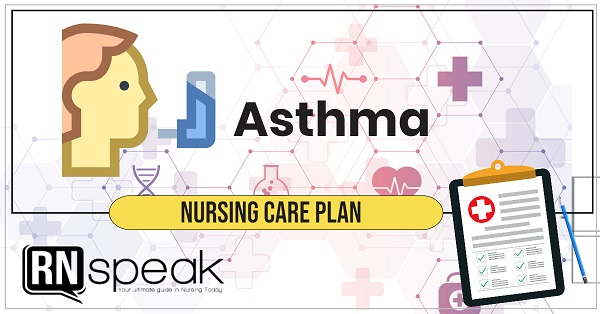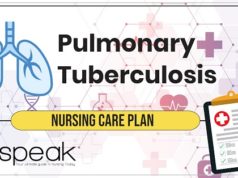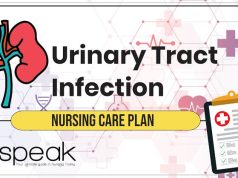Patients with respiratory problems are a challenge for the nurse to care for, especially since there are quite a number of needs that the nurse should prioritize. Patients with asthma are a part of the group of patients in this category, with the nurse having to ensure that apart from meeting the patient’s needs to ensure patent airway and efficient gas exchange, there is also a need to meet other physiologic and psychosocial needs. However, before prioritizing which nursing problem the patient needs to have addressed first, the nurse needs to be familiar with the disease process and how it affects the patient in general.
Asthma, or bronchial asthma, is a chronic airways disease usually triggered by an allergic response to a stimulus. This response leads to inflammation of the airways, bronchoconstriction, and the production of thick tenacious sputum. All these show the airway to become narrower, giving rise to the hallmark wheezes heard among asthma patients. Patients are also seen experiencing shortness of breath, unproductive coughing, flaring of the nostrils, and activity intolerance.
Because asthma is a stress and/or inflammatory reaction to a stimulus, attacks are typically associated with triggers such as extreme temperatures (too much heat or too much cold), sudden changes in temperature, dust, pollen, smoke, exercise, emotions, or stress. In some cases, the attacks can also be triggered when patients are diagnosed with another type of respiratory disease or experience complications of other conditions. Regardless of the triggers, the symptoms are always almost the same.
Management of Asthmatic Attacks
A medication regimen is usually instituted during the exacerbations of the disease. The type of medication given to patients depends on the symptoms being presented, the priority of care, and the individual’s age. These are also done relative to the results of other tests performed on the patient.
Due to the chronic nature of the disease, asthmatic patients are also provided with health education to help them take responsibility for their conditions and reduce the risks of exacerbations. Common non-pharmacologic interventions such as deep breathing and coughing exercises, relaxation and meditation therapy, and ensuring that the patient has proper nutritional intake should also be given importance. Moreover, allowing the patient to know exactly what triggers their attacks would help them avoid these and decrease the incidences of asthma.
Asthma Nursing Care Plan
Patients with asthma suffer mainly from respiratory symptoms, and the nurse should address these symptoms as soon as they are identified. Nursing diagnoses for patients with asthma center mostly on airway clearance, breathing patterns, and gas exchange but also include other issues involving endurance, anxiety, and even nutritional status. In this section, some of the most common nursing diagnoses and their care plan will be presented to help better care for patients with asthma. The following nursing diagnoses were more commonly seen among patients with asthma:
- Ineffective airway clearance
- Ineffective breathing patterns
- Impaired gas exchange
- Activity intolerance
- Anxiety
- Knowledge deficit
- Risk for/Nutritional imbalance: more/less than body requirements
Ineffective airway clearance
Ineffective airway clearance related to (indicate one or more of the following related factors: airway spasm, production of thick tenacious sputum, retention of sputum, etc.) secondary to the diagnosis of asthma as evidenced by (include assessment findings specific to which particular symptoms the patient is manifesting such as:
- Wheezes and rhonchi heard upon auscultation
- Coughing (indicate whether productive or unproductive)
- Dyspnea
- Orthopnea
- Changes in rate, depth, and rhythm of respiration
Desired Outcomes
After nursing interventions, the patient is expected to:
- Exhibit easy, effortless breathing
- Decreased severity and incidence of wheezing
- Increased airway patency
| Nursing Action | Rationale |
| Assess the patient’s vital signs, paying particular attention to the respiratory rate, depth, and rhythm. | Focused assessment helps determine the source of airway patency problems, its severity, and how it affects the patient’s breathing. |
| Monitor the patient’s oxygen saturation status several times daily. | Using a pulse oximeter to determine the oxygen saturation of the patient |
| Auscultate breath sounds, noting for incidences of adventitious sounds. | Presence of adventitious sounds may indicate worsening or improvement in airway patency. These should be monitored closely and referrals made when necessary. |
| If the patient produces sputum, assess sputum characteristics. Note the ability of the patient to cough effectively. | Determine the color, viscosity, and appearance of the sputum. Samples can also be sent to the laboratory for analysis, and necessary referrals can be made. |
| Increase oral fluid intake, if not contraindicated. | Increasing the oral fluid intake of the patient to more than 3 liters per day helps liquefy secretions and prevent the patient from suffering from dehydration. |
| Teach deep breathing and coughing exercises, paying particular attention to how to expectorate | Deep breathing and coughing exercises help the patient maintain airway patency by mobilizing secretions, making it easier to expectorate them. |
| Perform bronchial taps if not contraindicated.
Note: Bronchial taps may not be performed on patients with lung cancer or other diseases where lung tissue fragments may get dislodged by the action. If the nurse sees lung fragments in the expectorate, the physician must be contacted immediately. |
The vibrations created when performing bronchial taps helps loosen secretions and make it easier for the patient to expectorate it or eliminate via the gastrointestinal tract. |
| Anticipate an order to administer medications such as mucolytics and bronchodilators when patients are not receptive to more conservative management. | Mucolytics act to liquefy secretions, thereby reducing the viscosity of phlegm and making the patient better able to |
| Schedule patient activity between periods of rest. | Allowing time in between activities enables the patient to rest and avoid fatigue and increased oxygen demands of the patient. |
| Advise the patient to avoid or decrease intake of caffeinated beverages and alcohol. | These beverages may lead the patient to dehydration, thereby increasing the viscosity of secretions. Moreover, dehydration among patients can hamper the absorption rate of medications administered to improve airway clearance. |
| Involve the family in the care plan, letting them know the level of guidance and assistance the patient needs on a daily basis, ensuring that independence and optimal levels of functioning are maintained. | Having the family know the care protocols for the patient, its rationale and how it affects overall patient wellbeing. |
| Anticipate order for oxygen inhalation therapy and/or intubation among patients whose airway obstruction worsens. | Patients with moderate to severe airway narrowing may require oxygen therapy to help correct hypoxemia that might have resulted from the condition. This, in turn, helps mitigate the possibility of tissue hypoxia.
Intubation may be needed among those who suffer from severe airway clearance issues and impending respiratory failure. The nurse must ensure that an order for intubation is made, necessary consents are obtained and patient/SO education is done prior to the actual procedure. |
Ineffective/impaired breathing patterns
Ineffective/impaired breathing patterns related to (indicate one or more of the following related factors: spasms of the bronchial tubes, swelling of the bronchial tubes, irritating biological agents, etc.) secondary to diagnosis of asthma as evidenced by (include assessment findings specific to which particular symptoms the patient is manifesting such as:
- Patient complaints of dyspnea, primarily upon exertion
- Coughing (indicate whether productive or unproductive)
- Flaring of the nares
- Changes in respiratory rate, depth and rhythm
- Use of accessory muscles in respiration
Desired Outcomes
After nursing interventions, the patient is expected to:
- Exhibit easy, effortless breathing
- Improved breathing pattern
- Reports of the absence of dyspnea
| Nursing Action | Rationale |
| Assess the patient’s vital signs, paying particular attention to the respiratory rate, depth and rhythm. | Focused assessment helps determine the source of airway patency problems, its severity, and how it affects the patient’s breathing. |
| Monitor the patient’s oxygen saturation status several times daily. | Using a pulse oximeter to determine the oxygen saturation of the patient |
| Auscultate breath sounds, noting for incidences of adventitious sounds. | Presence of adventitious sounds may indicate worsening or improvement in airway patency. These should be monitored closely and referrals made when necessary. |
| Determine the I/E ratio of the patient, noting the ability of the patient to move air in and out of the lungs. | I/E ratio helps determine the ability of the patient to move air in and out of the lungs and perfuse tissues with oxygen. |
| Identify if the patient is dyspneic and the severity of dyspnea that the patient experiences.
Note: Note also for the presence of dyspnea upon exertion and conversational dyspnea. |
Dyspnea in varying severity can be used to determine the presence and progression of respiratory distress among patients. Dyspnea, especially with other signs such as chest retractions and flaring of the nares, needs to be reported immediately. |
| Teach deep breathing and coughing exercises, paying particular attention to how to expectorate | Deep breathing and coughing exercises help the patient improve breathing patterns by correcting the I/E ratio, normalizing breathing patterns. |
| Place the patient comfortably on a bed, ensuring that the head of the bed is elevated to at least 45 degrees. | This position helps the patient to breathe effectively by promoting optimum lung expansion by allowing the diaphragm to expand and contract with each breath. |
| Encourage the patient to practice pursed-lip breathing. | Pursed-lip breathing exercises help improve the patient’s breathing pattern by prolonging exhalation time, thereby allowing the air to move in and out of the lungs in a 1:2 ratio. |
| Schedule patient activity between periods of rest. | Allowing time in between activities enables the patient to rest and avoid fatigue and increased oxygen demands of the patient. |
| Involve the family in the care plan, letting them know the level of guidance and assistance the patient needs on a daily basis, ensuring that independence and optimal levels of functioning are maintained. | Having the family know the care protocols for the patient, its rationale and how it affects overall patient wellbeing. |
Anticipate order for:
|
These medications act in various capacities to help ease bronchial spasms, cause bronchodilator, or in cases where the constrictions may be caused by sputum, to liquefy secretions. |
Activity Intolerance
Activity intolerance related to insufficient physiologic energy secondary to diagnosis of asthma as evidenced by (include assessment findings specific to which particular symptoms the patient is manifesting such as:
- Patient verbalization of weakness and shortness of breath
- Hesitation in engaging in physical activities
- Alterations in vital signs: increased heart rate, respiration, and blood pressure
- Dyspnea upon exertion
- Changes in ECG readings
Desired Outcomes
After nursing interventions, the patient is expected to:
- Exhibit easy, effortless breathing
- Display willingness to perform activities of daily living
- Increased activity tolerance
| Nursing Action | Rationale |
| Assess the patient’s vital signs, paying special attention to the respiratory rate, depth and rhythm. | Focused assessment helps determine the effects of activity on the patient’s vital signs and how it manifests tolerance. |
| Determine which particular activities cause activity intolerance. | Knowing the activities that cause intolerance will allow the nurse to plan for the patient’s activities while promoting rest and conserving oxygen consumption. |
| Assess the patient’s abilities to engage in activities that he can tolerate. | Encouraging independence in activities that the patient can tolerate helps provide a sense of control over his health status and, therefore, cooperation in his care. |
| Identify the daily activity plan of the patient and modify it accordingly. | The patient’s activity tolerance may change daily, depending on his energy, and must be assessed regularly to help him build tolerance to various activities. |
| Explore the patient’s current nutritional status, focusing both on the quality and quantity of intake. | Poor nutritional status may affect the patient’s activity tolerance since food provides the patient with the energy to engage himself in various tasks and activities. |
| Review medications that the patient has been prescribed and its mechanisms of action. | Some medications may cause sleepiness, drowsiness, and fatigue. These medications should be identified, and their effect on activity tolerance managed through planned interventions. |
| Encourage the patient to engage himself in progressive activities. | Allowing the patient to complete more straightforward tasks before moving to more complex ones gradually increases tolerance and time for the body to adjust to take on more complex activities. |
| Provide the patient a schedule of activity that alternates movements and periods of rest regularly. | Alternating activities and rest allow the body to rest and relax, improving the quality of sleep and helping the patient participate in activities to increase activity tolerance. |
| Schedule patient activity between periods of rest. | Allowing time in between activities enables the patient to rest and avoid fatigue and increased oxygen demands of the patient. |
| Involve the family in the care plan, letting them know the level of guidance and assistance the patient needs on a daily basis, ensuring that independence and optimal levels of functioning are maintained. | Having the family know the care protocols for the patient, its rationale and how it affects overall patient wellbeing. |
| Provide patient assistive devices when needed (i.e., cane, walkers, wheelchairs, etc.). | The use of assistive devices may help patients with limitations in mobility to engage in activities and increase tolerance.
|
Sample Nursing Care Plan
Nursing Diagnosis: Ineffective Airway Clearance
| Nursing Diagnosis | Objectives | Nursing Interventions | Rationale | Evaluation |
|---|---|---|---|---|
| Nursing Diagnosis: Ineffective Airway Clearance Possible Etiologies: (Related to) • Bronchospasm • Increased production of secretions; retained secretions; thick, viscous secretions • Decreased energy/ fatigue Defining characteristics: (Evidenced by) • Statement of difficulty in breathing • Feeling of chest constriction • Changes in depth/ rate of respiration; tachypnea • Tachycardia • Use of accessory muscles or marked respiratory effort • Abnormal breath sound, inspiratory and expiratory wheezing • Cough (persistent), without sputum production • Prolonged expiration | Goals/ Objectives: Short term goal: Client will demonstrate signs of patent airway and adequate oxygen exchange within 3 days. Long term goal: Client will demonstrate behaviours to improve or maintain airway clearance and identify potential complications and initiate appropriate actions. | Nursing Actions 1. Assess respiratory status every hour during acute phase: lung sounds, respiratory rate and depth, presence and severity of wheezing, breathing pattern, use of accessory muscles. 2. Assist patient to assume to comfortable position, i.e. elevate head of bed, have client lean on over bed table or sit on the edge of bed. 3. Keep environmental pollution to a minimum according to individual situation. 4. Encourage and assist abdominal and pursed – lip breathing exercises. 5. Increase fluid intake to 3000ml/ day within cardiac tolerance. 6. Provide warm liquids and recommend intake of fluids between meals, instead of during meals. 7. Administer medications as indicated. 8. Monitor side effects of bronchodilator (tremors/ tachycardia). 9. Provide supplemental humidification, e.g., neutralizer in respiratory treatments. 10. Monitor ABGs, pulse oximetry, chest x- ray. | 1. Some degree in bronchospasm is present with obstruction in airway and may be manifested with wheezing or absent breath sounds in severe asthma. Tachypnea is usually present to some degree and respiratory dysfunction is variable depending on underlying process such as allergic reaction. 2. Elevation of head of the bed facilitates respiratory function by use of gravity, however client in distress may seek position that most eases breathing. 3. Precipitators of allergic type of respiratory reactions that can trigger or exacerbate onset of acute episode. 4. Provides some means to cope with or control dyspnea and reduce air trapping. 5. Hydration helps thin secretions, facilitating expectoration and using warm liquids may decrease bronchospasm. 6. Fluids during meals can increase gastric distension and pressure on the diaphragm. 7. Anticholinergic medications are the first line drugs for clients with this condition. 8. Humidity helps reduce viscosity of secretions, facilitating expectoration and may. 9. Breathing exercises help enhance diffusion, nebulizer medications can reduce bronchospasm and stimulate expectoration. 10. Establishes baseline for monitoring progression/ regression of disease process. | Outcome Criteria: Client will verbalize reduction or absence in difficulty in breathing and feeling of chest constriction, respiration and cardiac rate within normal range, absence or reduction of inspiratory and expiratory wheezing, and ability to resume to activities. Client will be able to identify and avoid potential allergens or stimuli that would trigger asthma attack and be able to handle symptoms if recurrence comes, prompt follow up checkup and to always bring or have the prescribed medication/s on hand in case asthma occurs. |
References
- Doenges, M. E., Moorhouse, M. F., & Murr, A. C. (2019). Nurse’s pocket guide:
- Diagnoses, prioritized interventions, and rationales. Philadelphia: F.A. Davis.
- Carpenito, L. (2016). Handbook of Nursing Diagnosis (15th ed.).
- Herdman, T., & Kamitsuru, S. (2018). NANDA International, Inc. nursing diagnoses (11th ed.).






![[Stroke] Cerebrovascular Accident Nursing Care Plan cerebrovascular accident nursing care plan](https://rnspeak.com/wp-content/uploads/2021/03/CVA-nursing-care-plan-238x178.jpg)


Asthma is debilitating disease because it can also shorten the life of the sufferer. In some cases, asthma is also very life threatening.